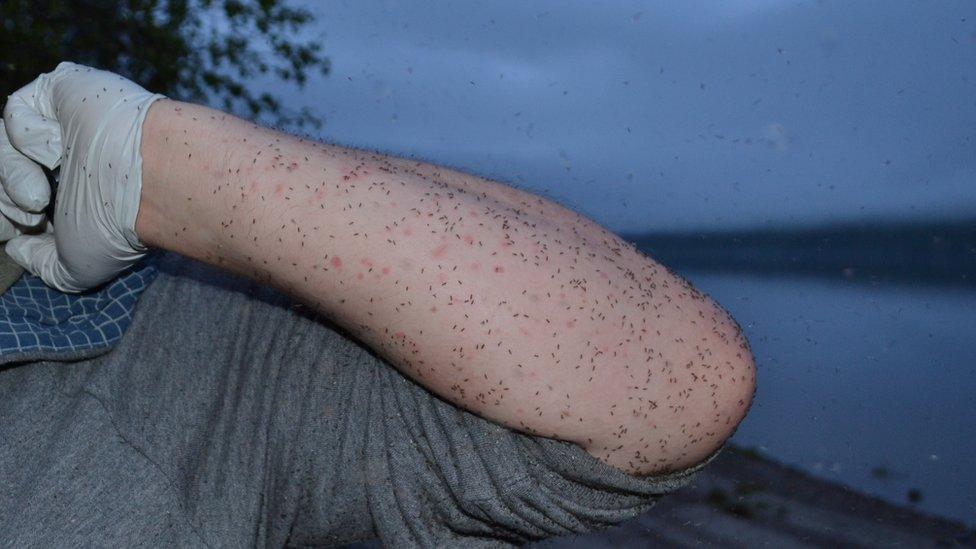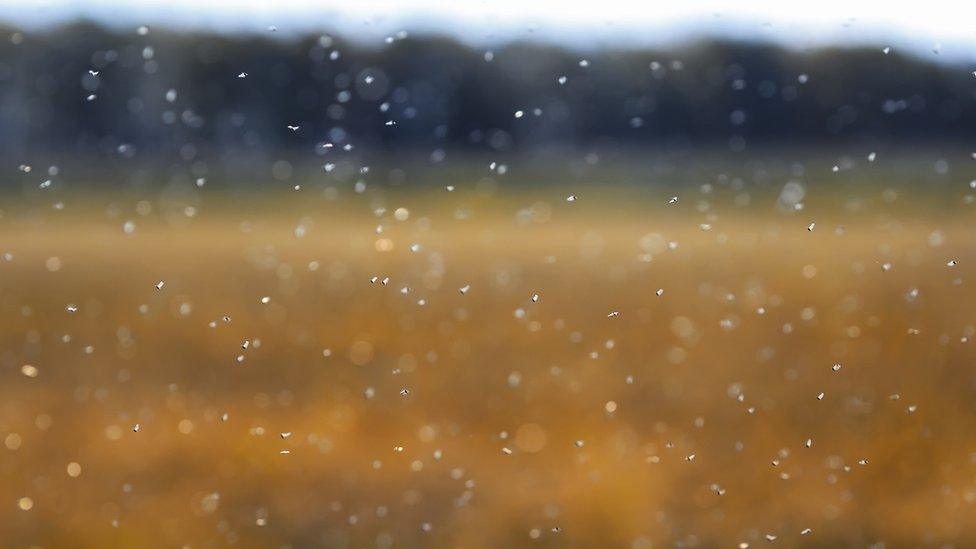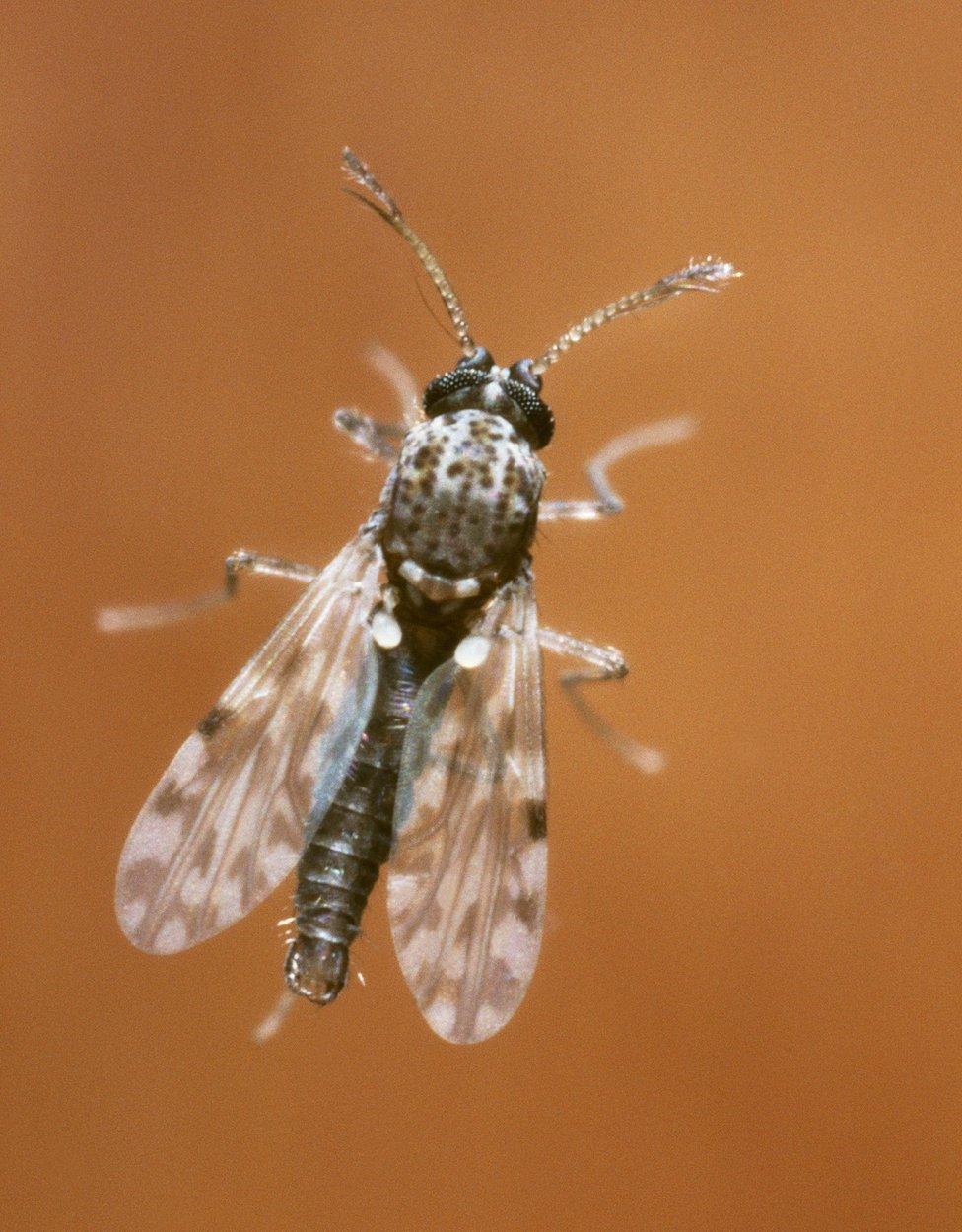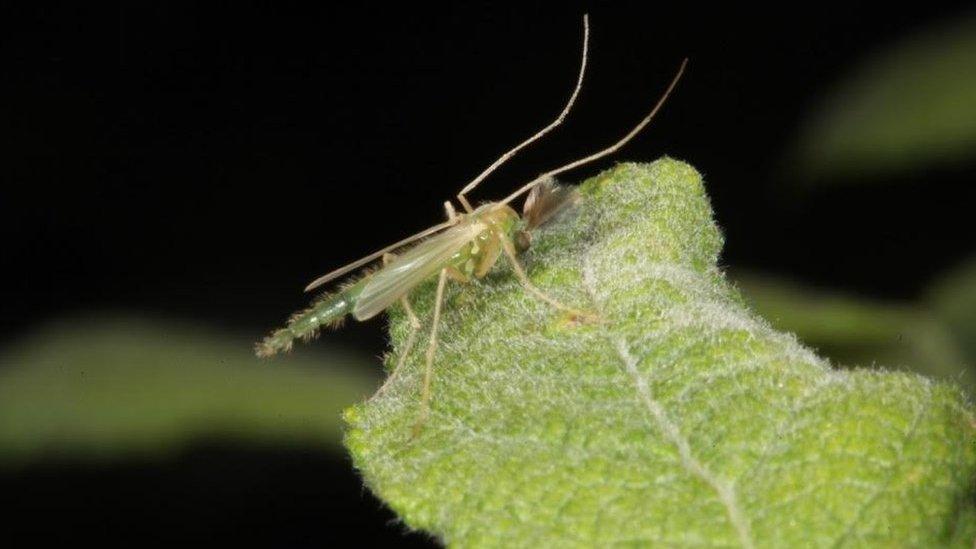Peak levels of Highland biting midges expected soon
- Published
- comments

Scotland's midge season usually starts in May and ends in late September
The notorious Highland biting midge is forecast to appear in "bumper numbers" in the next few weeks.
The first of this year's hatchings in May happened two weeks earlier than usual, according to the scientists behind the Scottish Midge Forecast.
This was because of warmer than usual temperatures.
But the cool and unsettled weather that followed affected the second hatching of midges and peak populations normally seen in June did not occur.
Numbers were high in June, but not at the peak levels expected in that month.

This year's first hatching of midges came earlier than usual
Dundee-based APS Biocontrol Ltd, which runs the midge forecast, has forecast what it described as potentially "bumper numbers" in coming weeks.
Director Dr Alison Blackwell said 2019's midge season to date had been a mixture of pockets of very high midge intensity and then areas where they hardly seemed to have got going.
She said: "The season started off a good two weeks early in early/mid May, with larger populations, particularly in Argyll.
"First generation midges mate and lay eggs that normally give rise to a second generation about six weeks later.
"Sometimes this can speed up in warmer weather but the relatively cool weather in June seemed to slow this development down a little, but we are now seeing the second generative appear in quite high numbers and with the warm, damp, weather, this is going to optimise their chances of survival and breeding success."

A rarer third hatching of midges could happen this year

Dr Blackwell said there was usually some relief during the second half of the season with a "considerable drop off" in midge activity, normally associated with a long, dry spell of weather.
But she added: "The long-term forecast for the coming months suggests that we're not going to see this.
"It may even be that the second generation is bigger than the first, although it's too early to say.
"The midges emerging now will mate and lay more eggs and we may see a small third generation in late August/early September depending on the weather."
Scotland's midges season usually start mid to late May and goes on until late September.
But in 2015, warm autumn weather produced a rare third hatching of biting midge.
In 2017, it was estimated that there could be 21 billion of the biting tiny insects in the Highlands and Islands.
The figure was for females, which feed on blood.
Their bites can leave itchy red lumps on skin.
Female biting midges need blood to mature the eggs they carry. Males feed on nectar and other natural sugars.
Scotland is also home to Chironomids, a "family" of non-biting midges that worldwide numbers thousands of species.
- Published9 May 2017

- Published1 March 2017
